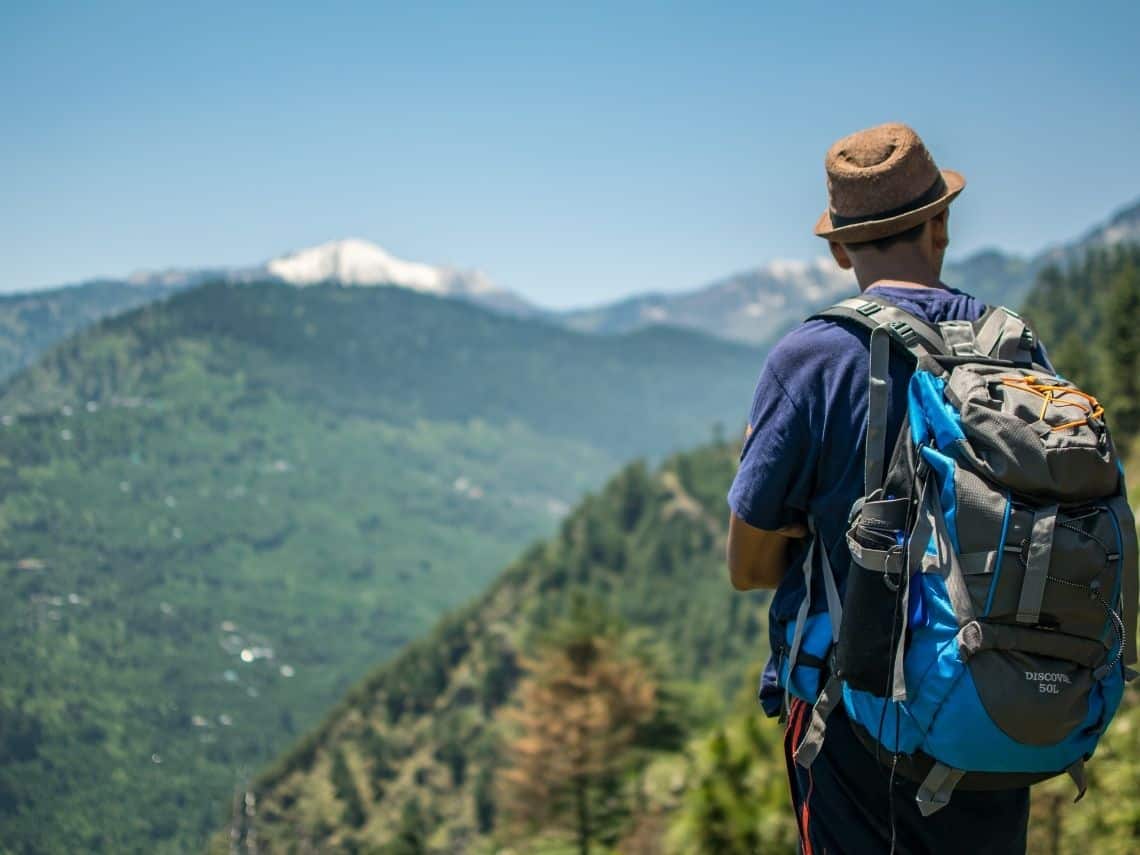What Is The Best Clothing To Wear In Uganda? 21+ ESSENTIAL Tips To Guide Your Packing List

Toothbrush, toothpaste, comb, and…uh….now you’re stuck. What is the best clothing to wear in Uganda? Maybe you’ve gotten advice from people who have traveled to other African countries, or you’ve spent hours scrolling through dozens of websites trying to find what not to wear.
We live in Uganda, so we know exactly what you need to feel comfortable, culturally respectful, and prepared for anything that comes your way.
Follow our guide for all of the essential packing tips you need to have the absolute best trip!
What Clothing Should I Wear In Uganda?
The clothing you wear in Uganda is highly dependent on gender and the activities you are doing. Here are the best options for men, women, and popular activities in Uganda:
Men’s Clothing In Uganda
There aren’t many guidelines for men when it comes to dressing.
We recommend sticking with jeans, slacks, t-shirts, and polos during your trip.
Here are some examples of appropriate clothing styles for men to wear in Uganda:
Women’s Clothing In Uganda
Unfortunately, there are more guidelines when it comes to women’s clothing. What you wear will mostly depend on the kind of activities you plan to partake in during your visit.
If you plan to spend your time doing safaris, hiking, or other physical outdoor activities, feel free to wear athletic attire. We recommend that you carry along a sarong to tie over your legging or shorts, especially when in rural areas.
Many large cities in Uganda are quite western in their dressing. You can feel at ease wearing casual clothing like jeans and t-shirts. We highly recommend you pack a few skirts and dresses that at least cover your knees. This will ensure you have dressed appropriately if you end up in a more culturally traditional setting.
Here are some examples of appropriate clothing styles for women to wear in Uganda:
Clothes For Hiking
Uganda is rich with hiking opportunities. You can choose to hike mountains, climb waterfalls, or go gorilla and chimp trekking. Regardless of what kind of hiking you do, you will need proper attire.
To protect yourself from the sun, bugs, and sometimes bushy trail conditions, we recommend wearing long pants and a breathable shirt with sleeves or layers that you can remove during your hike. You will also want to wear waterproof hiking boots and a hat.
Clothes For A Safari
There are many game reserves and national parks, like Kidepo Valley and Murchison Falls, where you can go for safaris. It is best to avoid dark clothes that absorb heat, as well as white clothes that attract excessive dirt and dust.
We also recommend not wearing blue clothes which can attract tsetse flies. While African Sleeping Sickness is uncommon in Uganda today, tsetse fly bites can still cause painful blister-like rashes that can last up to a week.
Clothes For Rafting
Whitewater rafting on the river Nile is an exhilarating activity, though not for the faint of heart. With mostly class 3 to 5 rapids, you are guaranteed to get wet. It is best to wear quick-dry activewear for this activity and a tight-fitting waterproof shoe.
Clothes For Going Out In Uganda
Uganda is known for its vibrant nightlife scene, and hopefully, it will soon return as the pandemic subsides. Most bars in Uganda do not have a dress code. Wearing jeans, a nice shirt or blouse, and clean sneakers, flats, or sandals will help you to look “smart”.
Feel free to step up your game in Kampala if you are heading to places like Guvnor, Soho, or The Alchemist.
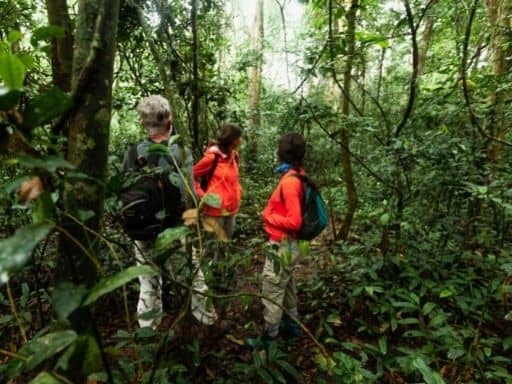
What Clothing Can You Not Wear In Uganda?
Shorts
For both men and women, shorts are not worn by adults. If you do decide to bring shorts to wear, opt for something knee length.
Tight and Revealing Clothes
Tight and revealing clothing in Uganda is not common. This means leggings, exposed shoulders, and cleavage. While you could get away with some of these choices for nightlife attire, these kinds of clothes are not common in day-to-day life. Avoid them if possible.
Camouflage
In 2018 there was a new directive from the Ugandan Police to confiscate camouflage attire worn by civilians. The order was meant to prevent criminals from impersonating police and military officials. There have not been any updates on this directive, so it is best to avoid camouflage print clothing completely while packing for Uganda.
Political Colors
Unfortunately, colors have become quite political due to party affiliation in the past couple of years. This was especially heightened during the presidential election in early 2021. Wearing red and yellow-colored clothing in Uganda, especially in public places, is not recommended.
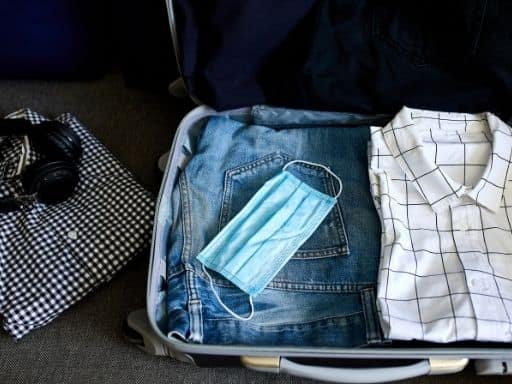
What Should I Pack For Uganda?
After organizing many trips, we’ve come up with a comprehensive list of things you should pack for Uganda. Here are our 21 essential items to guide your packing list:
1. Day Pack
If you’re going shopping, hiking, or any other activity, you won’t need to carry all your luggage with you, just the essentials…like snacks. You will likely be bringing a carry-on while traveling to Uganda, so opt for a sturdy day pack for your journey.
If you plan to do hiking, you may want to consider bringing along a day pack that has space for a hydration pack. We like the Aquamira tactical day pack, which is perfect if you will do any hiking or trekking. Although it is meant for drinking, we have also used this hydration pack for a high-pressure make-shift shower.
2. Money Belt or Neck Wallet
Day packs are a great item to have for your trip, but you won’t want to carry a lot of cash or valuables on your back through crowded areas while your eyes are looking ahead. Consider a money belt or neck wallet that you can put your cash, phone, or any other important items in.
This simple addition to your packing list will bring you peace of mind if you plan to spend most of your time on foot in larger cities or taking public transportation.
3. Virtual Personal Network (VPN)
Whether you plan to unlock your phone and buy a local SIM card or just hop on WiFi, you’ll want to download a VPN before heading to Uganda. Facebook is one of the websites that has been blocked in the country for almost a year now. If you plan to update people back home or share photos daily throughout your trip, save yourself the headache and get a VPN.
There are a lot of pseudo-free VPN apps filled with ads that you can test out.
We recommend downloading ExpressVPN. We have enjoyed our experience with this app, and it continues to be the best performing VPN globally and has 24/7 customer service. You can purchase a one-month subscription for $12.95 or twelve months for $8.32 per month. ExpressVPN has a 30-day money-back guarantee if you’re not satisfied.

4. Power Bank
You can avoid further headaches on your trip by bringing along a power bank. Uganda has its moments of unstable power or limited to no power at all, depending on where you plan to stay during your trip. Keep your phone charged with this Anker power bank. We have had ours for years and never leave home without it.
If you plan to carry along more equipment—laptop, tablet, camera, and batteries—we highly recommend this Halo Bolt power bank. You could easily charge all of your electronics during your stay on one charge.
5. Power Adapter
Uganda uses Type G plugs and sockets with a voltage of 240 V and 50 Hz frequency. Unless you’re coming from the UK, you’ll likely need to pick up a power adapter before your trip. We love having a universal plug adapter that you can use wherever you travel around the world. You can also opt for a universal power strip with a Type G plug. This is an especially useful item to have if you are staying in hostels with limited outlets.
6. Steripen
Clean water is a necessity, especially on your trip to Uganda. You will easily be able to buy bottled water at restaurants, hotels, and shops, even in rural areas. The trade-off is spending a lot of money on water and creating a lot of plastic waste.
We recommend packing a Steripen for your trip, which uses UV light to kill 99.9% of bacteria and viruses. This has been a life (and wallet) saver for us while staying at hostels on a tight budget. You can also use the Steripen if you are doing outdoor activities. Make sure to carry along a wide-mouth reusable water bottle with you.
7. Travel Towel
Consider this an essential item for budget backpackers and outdoor travelers. A travel towel made from microfiber will dry quickly, and it is less bulky than a regular towel making it a space saver too. You can also use a travel towel as a make-shift curtain or blanket if you’re in a pinch.
8. First Aid Kit
We’re not talking about fully equipped survival medical gear, but a small pouch with some bandaids and alcohol wipes can come in handy.
You should also consider adding ibuprofen, Imodium, Pepto Bismol or charcoal tablets, oral rehydration salts (ORS), chapstick, hydrocortisone cream, and an anti-itch cream or Benadryl itch stick for a more complete setup. This will be handy if any small cuts, bites, or unwelcome bowel movements happen during your trip.
Don’t forget to bring your malaria prophylaxis too!
9. Sunscreen and Aloe Vera Gel
Sunscreen is difficult to find in Uganda. We recommend that you bring enough for your entire trip. If you forget to apply your sunscreen one day, or you are taking medication that makes you more prone to sunburn, aloe vera should also be on your packing list.
You will be very relieved to have the cooling relief of aloe vera gel to put on your burns. We highly recommend bringing both items along.
10. Insect Repellent
This is sometimes found in larger cities in Uganda. You should not plan on trying to find insect repellent when you really need it though. We don’t recommend bringing an aerosol can of repellent.
For those who don’t enjoy the overwhelming odor of DEET, this is our favorite DEET-free, citrus-smelling mosquito repellent.
11. Shampoo and Conditioner
If you’re not picky with products you can find shampoo in larger grocery stores, or any bar of soap. If you are picky, bring your own shampoo. To reduce space, you can opt for a shampoo bar, which is also environment and TSA-friendly for those not traveling with checked bags.
Conditioner is not easy to find, and when you do it’s quite expensive. If you don’t plan to stay in Uganda long enough to learn to make natural conditioners from local products, you can again opt for the bar form to be environmentally and luggage space friendly.
12. Feminine Hygiene Products
In Uganda, feminine hygiene products are mostly limited to pads. These usually come in one size and absorbency, so we recommend bringing your own if needed. You can find OB tampons (no applicator), but these are usually in large cities.
To reduce the hassle of finding products and later disposing of them, you can also opt for a reusable menstrual cup.
13. Padlock
You will likely already have a TSA lock on your bags from traveling. If you don’t we highly recommend picking up a few before your trip. These are essential for those travelers who plan to use public transportation, hostels, or walk around in the capital with day packs.
Locking your luggage will keep your items safe while you don’t have your eyes on it.
14. Sarong
While in Uganda you will likely see women wearing a sarong type of wrap, especially outside of the large cities. These wraps have very practical purposes, from keeping clothes clean while doing tasks, providing a covered place to sit on the ground, and carrying babies among other things.
If you plan to do outdoor activities and wear athletic clothes like leggings, you’ll want to carry along a sarong to wrap yourself in case you detour through a community. Wearing shorts or tight-fitting clothing in Uganda is not common practice, which could draw unnecessary attention.
15. Raincoat or Poncho
A raincoat or poncho is essential if you plan to travel during the rainy season or during the months where the wet season is beginning or ending. If you plan to do any hiking or mountain climbing activities, a rain jacket will be essential for layering and keeping dry in the drastic weather changes.
16. Layers
Despite being on the equator, the weather can get cold. You will definitely feel the chill if you’re staying near the mountains in the southwest or in the evenings near lake Victoria or national parks. Whether you want to bring a sweater or long sleeve shirt, you will use these clothing items in Uganda.
17. Quick-Dry Clothing
Uganda can also get hot and you will sweat…a lot. Not all of your clothing in Uganda has to be made of moisture-wicking athletic safari outfits. In fact, most Ugandans don’t wear these quick-dry clothing items, but you will be grateful to have a shirt or two and some slacks that will keep you cool and dry.
18. Swimsuit
There are plenty of opportunities to swim and get wet at hotel pools, Lake Bunyoni, or while rafting. You’ll want to enjoy the refreshing water without being weighed down by your clothes. We recommend packing a swimsuit for your trip to Uganda.
Women should feel free to wear a two-piece swimsuit so long as it’s not extraordinarily revealing.
19. Sunglasses and Hat
The sun on the equator can cause serious damage, especially to your eyes. Make sure to protect them with a pair of sunglasses, and even a hat. The hat will also come in handy to protect your face from the sun.
20. Walking Shoes
You will definitely do some walking during your time in Uganda. Whether it’s taking laps at the craft market, climbing up-and-down stairs, or strolling through town, you want to be comfortable, maybe even a little fashionable.
Our go-to sandals are Birkenstocks and Chacos, but you can also opt for a pair of your favorite trainers or close-toed sandals to keep your feet protected. If you’re a traveler planning to do activities like hiking or trekking you’ll need to carry along your hiking boots, preferably a waterproof pair.
If you plan to head to the source of the Nile river for rafting, we also recommend bringing a waterproof sandal.
21. New, Big Bills
If you plan to carry cash to Uganda, United States Dollars (USD) is the most useful currency. Many tourism companies, tourist sites, and hotels quote in USD. Make sure to plan a trip to the bank before your trip to Uganda.
You will need to carry USD notes that are dated no later than 2009 with no marks, tears, or other defects. Additionally, if you are paying for services or exchanging money, it is best to bring $100 bills, though $50 notes are also acceptable. Avoid bringing $20 bills or lower because the exchange rate is very low and they may not be accepted by some businesses.
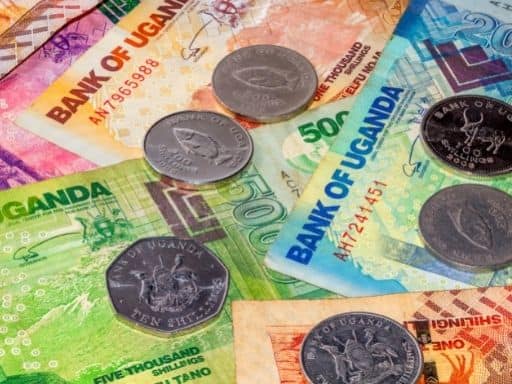
Some other not necessary, but you’ll be happy you brought them items:
Hand Sanitizer
In the age of COVID, hand sanitizer is readily available, but it doesn’t hurt to carry a small bottle on you if there isn’t a hand washing station or water is not available.
Headlamp
As we’ve said before, power is not always stable or available in Uganda. A headlamp can make these moments of darkness easier to navigate. You’ll also want to carry this if you plan to do any sort of camping or evening activity.
Contact Solution
If you wear contacts, we’re sure you already have all your necessary supplies. Make sure to carry enough contact solution for your trip because this item is not readily available in Uganda. We also recommend carrying your glasses along in case the dust begins irritating your contacts.
Eye Drops
If you plan to travel during the dry season or you have sensitive eyes, eye drops may come in handy. Throw a bottle in your first aid kit to ensure the excessive dust won’t disturb your chance to see all the beauty in Uganda.
Earplugs
Ugandans love to party, and they want the world to know it! If you don’t love the sound of booming bass and loud music, or you just like a quiet night’s rest, carry along a few pairs of earplugs to enjoy your night in peace.
Travel Scale
If you plan to do a lot of souvenir shopping don’t forget to leave room in your luggage to carry those purchases back home. Even for those not intending to shop, there are a lot of awesome Ugandan-made products that you’ll fall in love with and want to carry back (ah-hem coffee and beer).
A travel scale will help keep your luggage underweight or on par with your airline requirements, both on international and domestic flights in Uganda.
Flash Drive
Want to have music while driving hours away to the national park? Need to get a copy of a Ugandan song you heard playing at a local shop? Want to get the latest episode of your favorite show or watch a movie that just came out yesterday?
USB is the best way to share media in Uganda, so we recommend bringing a flash drive if you want to get in on the action. Looking to fill your media library for a longer stay in Uganda? We recommend getting an external hard drive for more entertainment in one device.
Camera and Binoculars
If you enjoy wildlife you’ll want to carry along a pair of binoculars to get an even better view of the remarkable mammals, birds, and aquatic animals in Uganda.
Carry along a camera to share all of your favorite sights with family, friends, and followers back home.
Travel Insurance
If you’re going to Uganda, travel insurance is a must. You can’t plan for unexpected situations like stolen luggage, emergencies, trip cancellations, and medical emergencies.
We like TravelInsurance.com because you can compare plans and coverage from the top travel insurance providers and get the best price for a worry-free trip.
Get your quote from TravelInsurance.com here
What Should You Not Bring To Uganda?
Mosquito Nets
All backpackers, hotels, and lodges are equipped with mosquito nets. Don’t waste room in your bag carrying your own.
Sleeping Bag
Unless you plan to go camping, don’t worry about carrying a sleeping bag. There will be sheets and blankets provided at all accommodation places in Uganda.
Lots of Cash and Valuables
Like anywhere in the world, walking around with a lot of money and valuables makes you a target for crime. Only carry what is necessary for your trip. All major cities in Uganda have ATMs that you can withdraw money from if needed.
Pro-Tip:
You can create an account on WorldRemit to connect to your bank account back home.
When you register a SIM card in Uganda to use with your unlocked phone, you can use the World Remit app to send yourself mobile money (the Uganda version of Zelle, Venmo, or PayPal).
If you are going to bring a lot of valuables along for your trip, we highly recommend insuring them with travel insurance in case of any mishaps.
Unnecessary Gear
Don’t pack for survival if you’re not doing outdoor survival activities. Uganda is quite modern, and many daily items (shampoo, toothbrush and toothpaste, soap) can be found at shops around the country.
In the capital city of Kampala, there are also large shopping malls that have many stores that international visitors are familiar with and will appreciate.
What Is The Weather In Uganda?
Uganda has two seasons rainy or wet seasons and two dry seasons. Your packing list will essentially stay the same regardless of the season you travel in, though some things may be more necessary, like rain jackets.
December, January, February
These are the long dry season months, and usually the hottest period of the year. Although the weather will be warmer, remember not to wear clothing that is too revealing. You’ll want to bring light, breathable clothing to feel the most comfortable.
March, April, May
The first rainy season of the year falls during these months. Rain is usually a welcome relief, though it can be quite heavy. Plan to bring rain gear, waterproof shoes, and quick-dry fabrics.
June, July, August
This is the second dry season of the year. The weather will become dry and hot again, though some rain is still possible. You can dress in breathable clothing and bring light rain gear along.
September, October, November
The second rainy season of the year before the long dry season. It is not as intense as the first wet season, but you should still be prepared in case of rainfall.
The effects of climate change are seen on a daily basis in Uganda. Many rural farmers will tell you that the planting schedules they have always followed have shifted dramatically in the past few years, sometimes by months. In addition to late seasonal shifts, there are also stronger rains and less forgiving sunshine.
We recommend using this seasonal breakdown as a guideline rather than absolute fact.
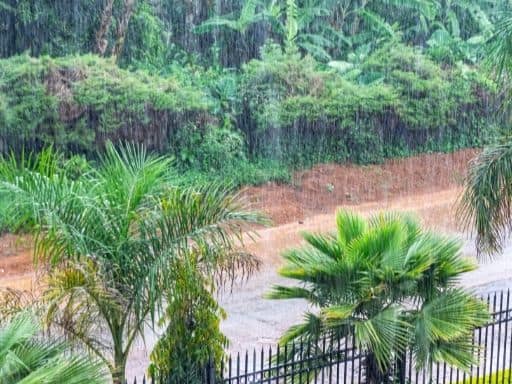
The Wrap Up: Packing and Clothing In Uganda
You have already made the best decision by planning a trip to Uganda. There are not many things you can not wear in Uganda. Overall, we recommend dressing for comfort and the activities you will do in Uganda.
Follow our guide as you pack your bags, so you don’t miss a thing for your unforgettable trip to the Pearl of Africa!
